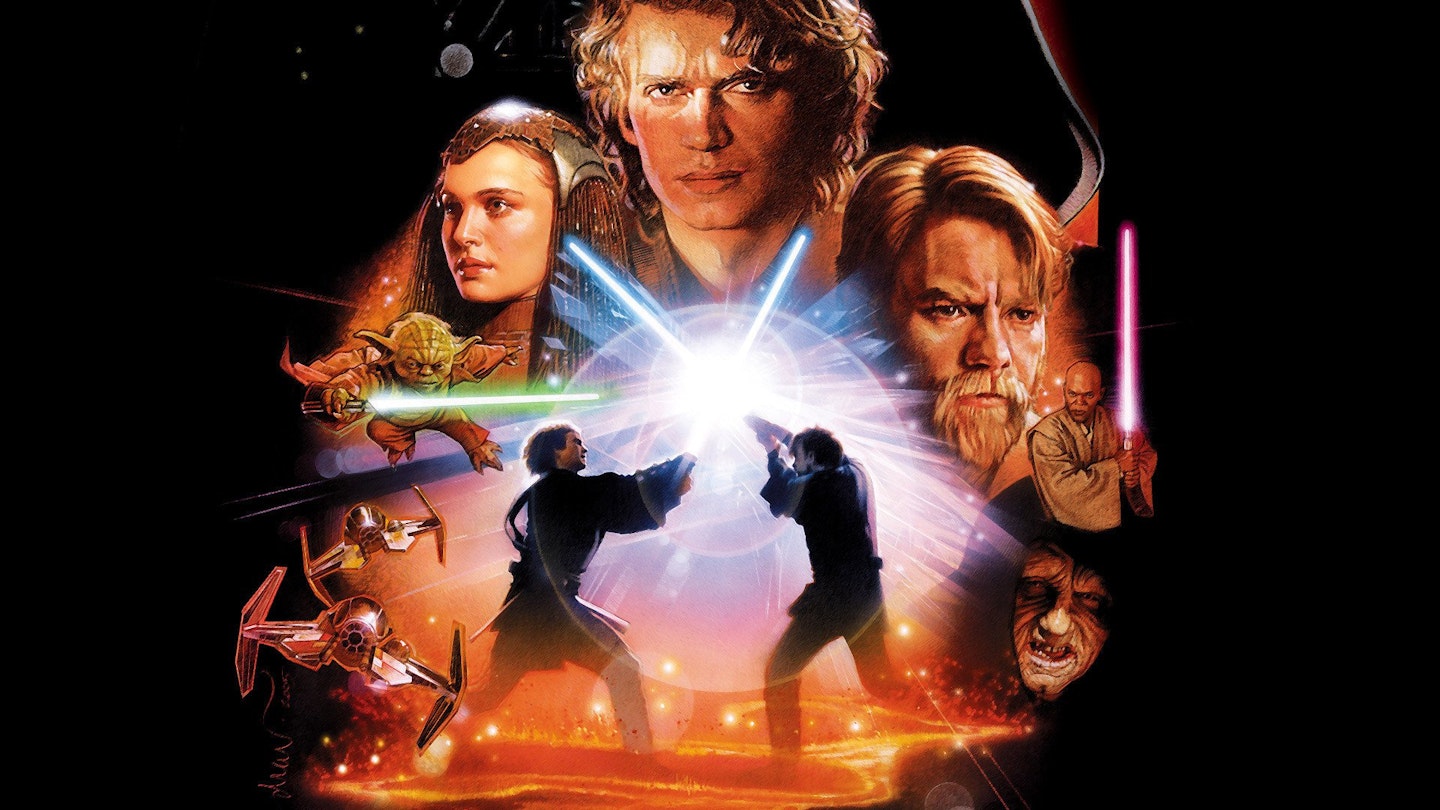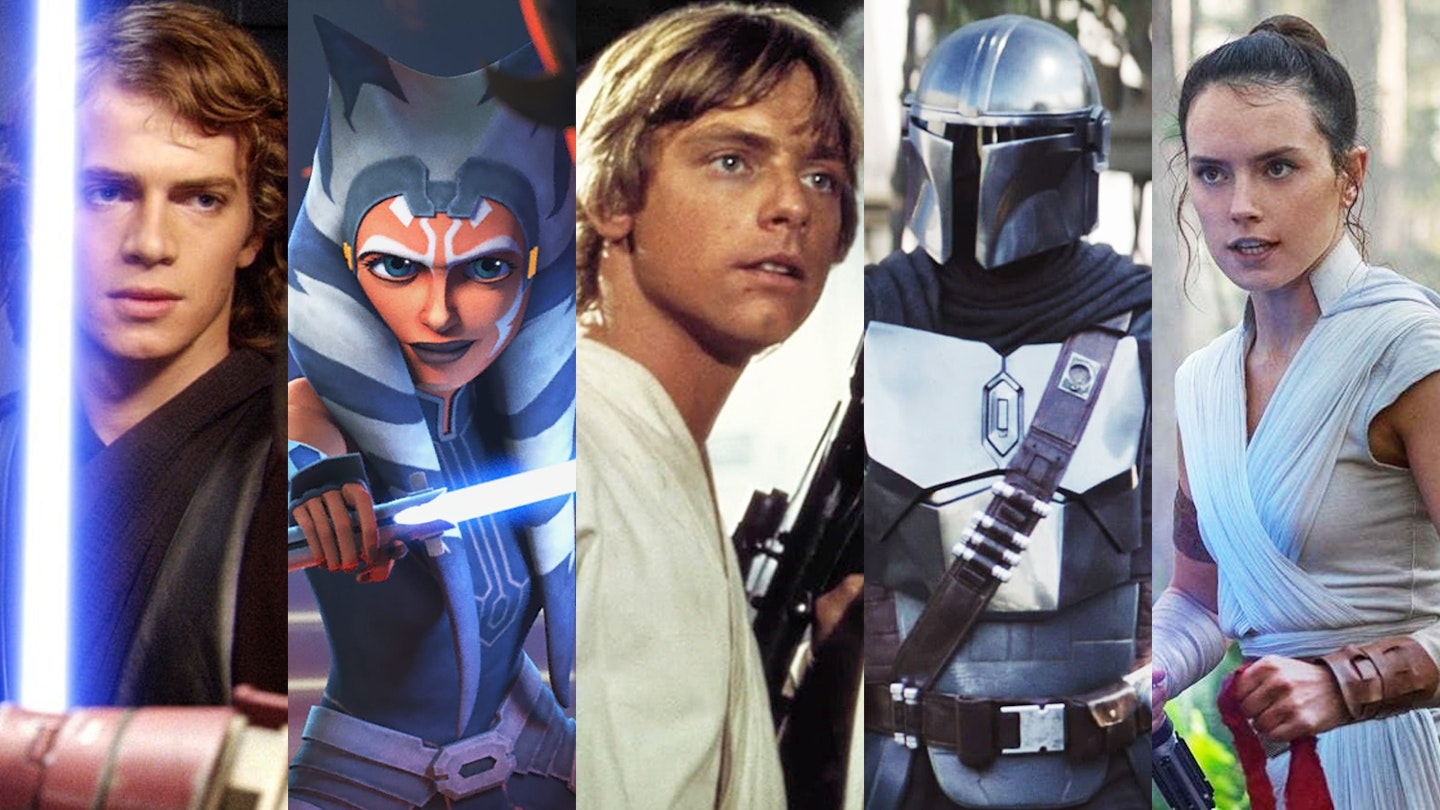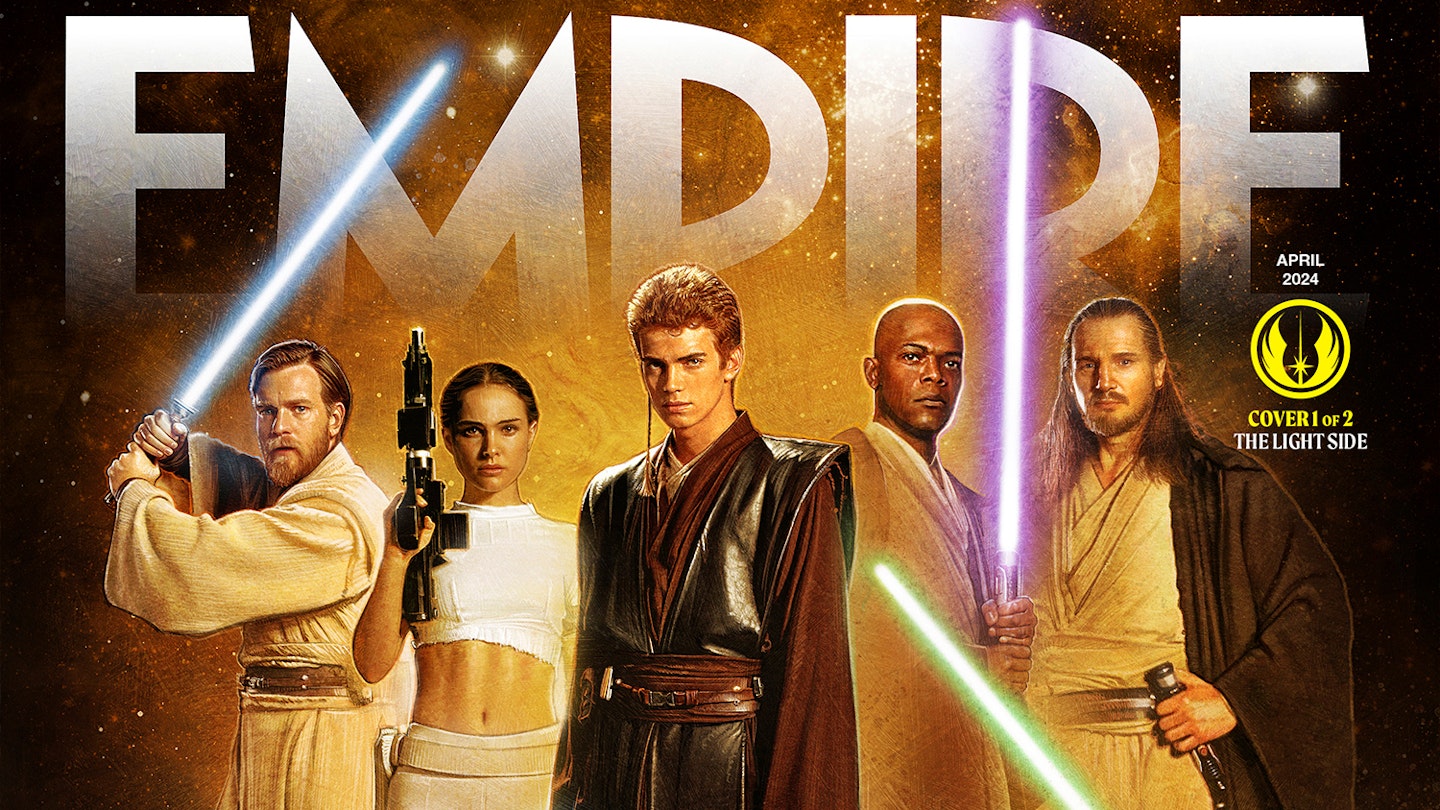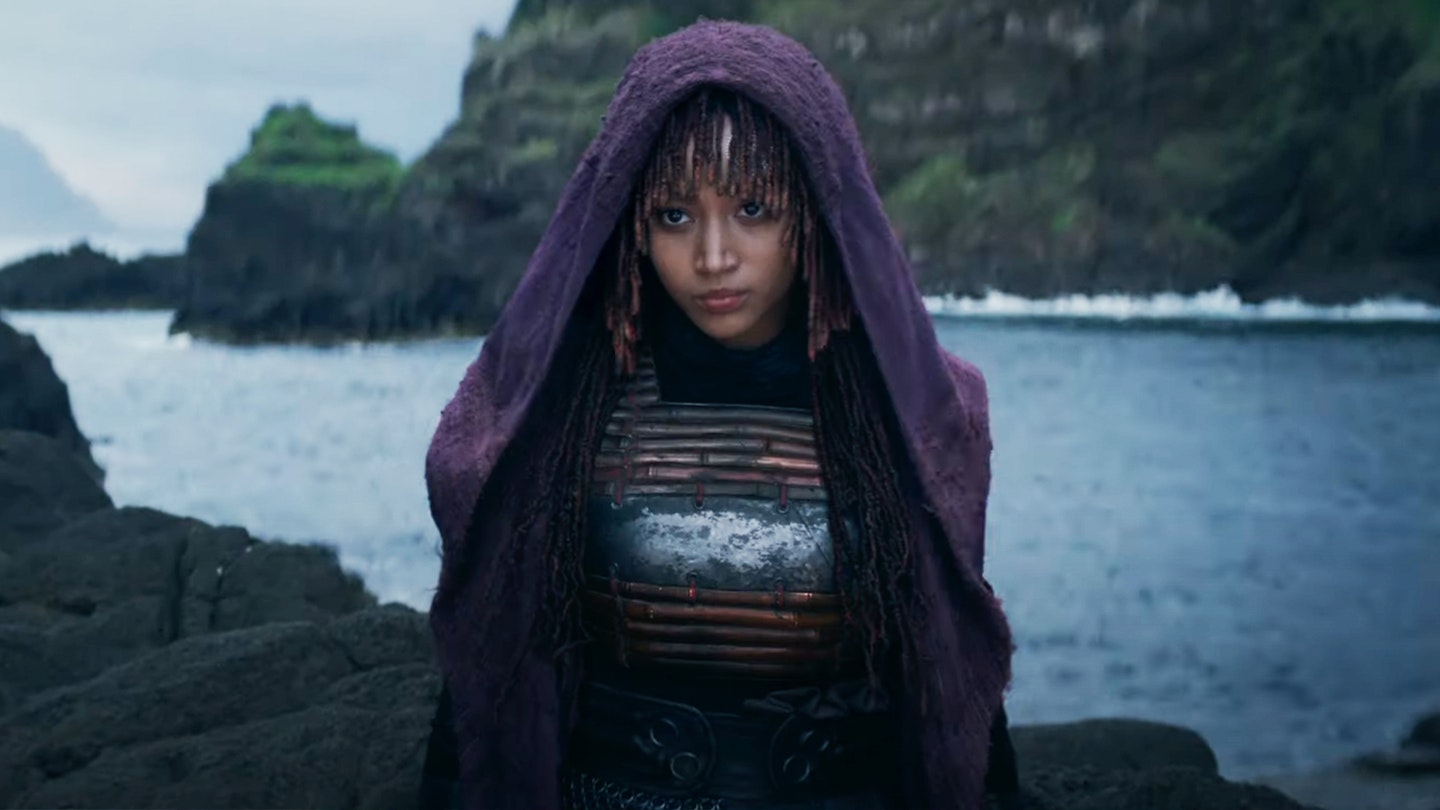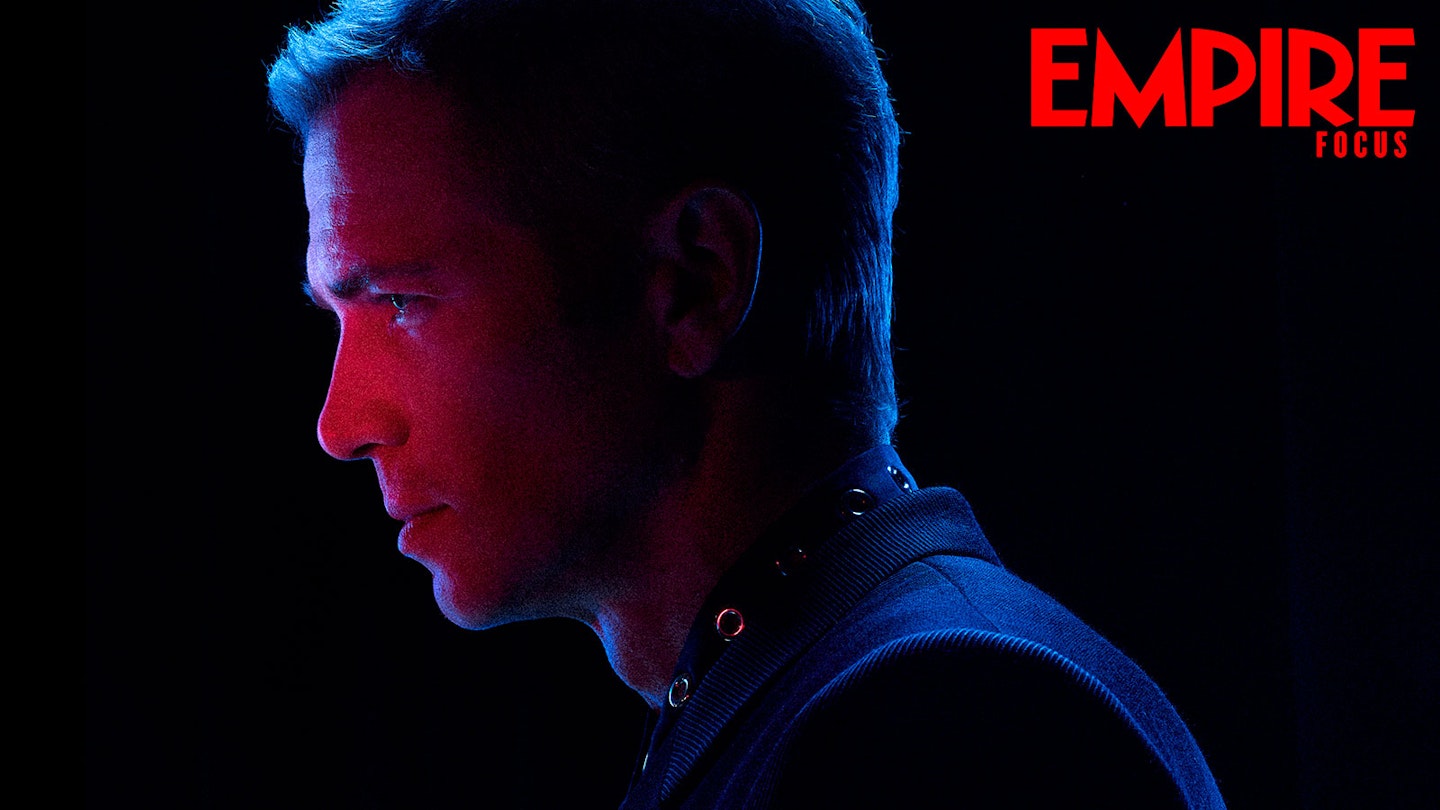In perhaps the most blatant instance of a Star Wars character plugging a plot hole, at one point in Return Of The Jedi, Obi-Wan Kenobi brushes aside the lies he told Luke about Vader with this infamous equivocation, "Many of the truths we cling to depend greatly on our own point of view." So then, from a certain point of view, Revenge Of The Sith, simultaneously the middle and last Star Wars movie, is the best sequel, and the most pleasing surprise, in the entire saga.
In true Saturday morning serial fashion Sith begins with a chapter left-over from a previous adventure: the rescue of the Chancellor from General Grievous by Anakin, Obi-Wan and the saga's best sidekick: R2-D2. Fast, loose, inventive and within touching distance of funny, this is the spiritual sequel to the original escape from the Death Star, reloaded with full Jedi powers. Like a fragment from a lost civilization, this episode hints at countless Clone Wars escapades that sadly exist only in the extended universe — still, at least we have that bit where Jar Jar falls over the explosive marbles captured on film.
The sequence ends with the saga’s single most audacious shot since the Star Destroyer first passed overhead — the front half of Grievous’ flagship The Invisible Hand screeching to a halt yards from camera — and it becomes clear that faced with the thankless task of directly dovetailing into a timeless classic everybody from Lucas down has raised their game considerably. ILM finally seem to have finished the digital toolkit they’ve been toying with since the late nineties fashioning flora and fauna that has real weight and substance for the first time. There are 2,200 effects shots in Sith — more than Menace and Clones combined — and there’s not a single specimen of bad compositing, which is more than can be said for 2006’s SFX Oscar winner King Kong.
Also flawless is Gavin Bouquet’s production design - indeed, Sith's most unambiguous joy is watching Bouquet and Lucas retrofit their galaxy - often there seems to be no escape as the mismatched trilogies crunch together, but a deft aside or throwaway motif always gets us out of the compacter.
So far, so certain point of view - however Sith carries a far graver responsibility than the prequels it quickly outclasses. Lucas himself admitted that fully 60 percent of his original outline was slated for this bridging episode, which means that all the unanswered questions that made the prequels permissible in the first place are addressed here. In other words, Sith is it: this is where the myths get set in stone, Lucas can muck around on Naboo all he likes, but if he screws up the birth of Vader, big black 'ain't ever going to be the same.
And once Sith starts forging myth, fingers are burned. The shortcomings may be familiar by now but they rankle more than ever here. Just as it was becoming possible to tune out the constant clanking of Lucas' lumbering dialogue the words are invested with real import. And just as we were getting used to the declarative ‘30s-style line readings that Lucas alone finds an adequate substitute for acting, the drama is asked to support some really heavy shit. Many of the key components of the Star Wars legend — Vader’s birth, Padme’s death — are ultimately undone by dialogue that is ludicrous either in intent or execution.
Sometimes you simply think “Noooo!”
Most damagingly, Anakin's conversion to the dark side is rushed through during a slack middle act where the chosen one bounces back and forth between Mace Windu and Palpatine like a confused teenager in a soap opera love triangle. The self-inflicted 20-20-60 story split that starved Episodes I and II of real incident, leaves Lucas with far too much ground to make up here: so far we’ve gathered that Anakin is arrogant, horny and has bad dreams —well, we all know it’s just a short-step from there to baby killer.
The delicious McDiarmid does his best to make the dark side sound seductive but unless you are steeped in Force lore (for the record, once Anakin cracks open the door, the flood-gates burst and it is near-impossible to resist) this critical moment - the moment - utterly fails to convince.
Mercifully then, the Star Wars myth is so powerful, so pre-imagined by so many, that much of it requires no explanation bar our constant narrator: the peerless John Williams. The twin duels that bring the third act to a rousing close confirm Sith as not just the darkest but also the prettiest entry in the saga — the lava landscape of Mustafa, in particular, has obviously been bubbling in Lucas imagination for nearly thirty years. (A few shots also benefit from having best pal Steven Spielberg play around with the “pre-viz” animatic software.)
In the end then, it depends on your point of view. As a sequel to the prequels, Sith is more than anyone can reasonably have hoped for, a movie that made it okay to be a Star Wars fan again. However, a few fans will always cling to a different truth, to an alternative universe where at least one prequel was the equal of the original trilogy. And for those people, Revenge Of The Sith, the last chance to get it right, will always rate as the biggest disappointment of all.
From a certain point of view.
